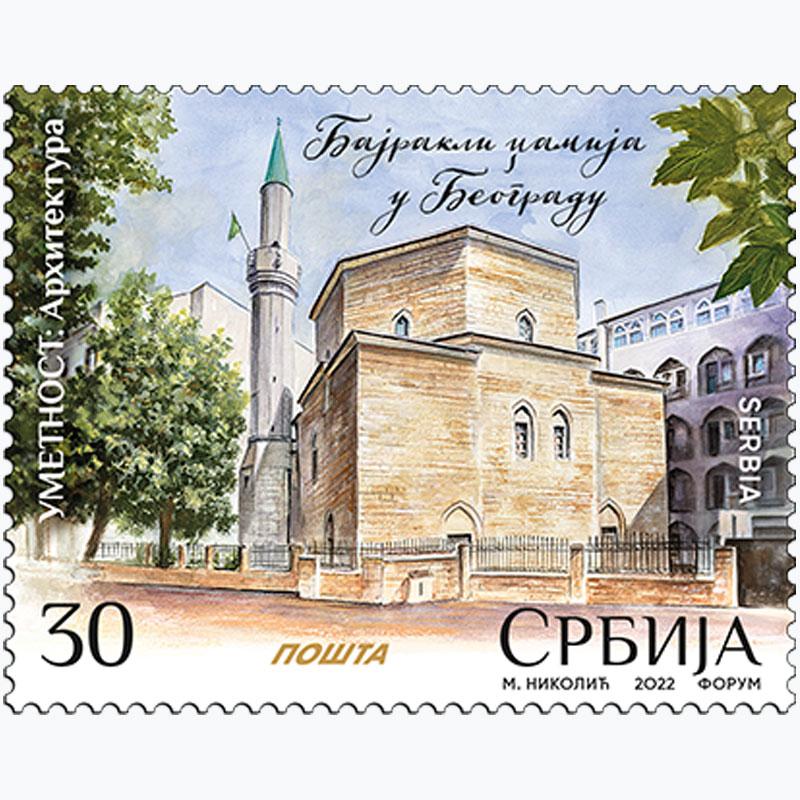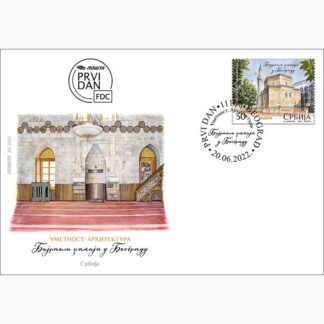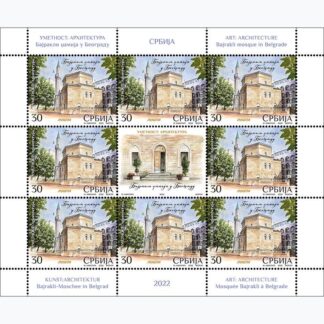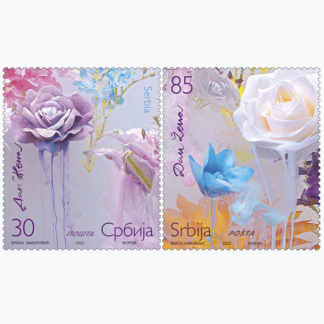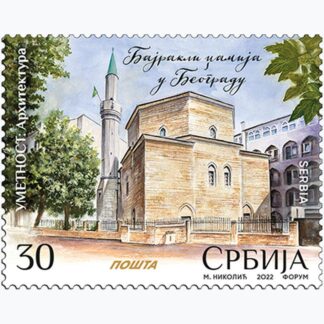Description
The Bajrakli Mosque, the main Islamic cultural centre in Belgrade, is a one-room building with a dome and minaret, built around 1522. It was originally called the Čohadži Mosque, after the endowment donor, the baize merchant, Hadži Alija. After the renovation in 1741, it was called Hussein-bey’s mosque for some time, and at the end of the 18th century it was named Bajrakli-mosque, after the flag that stood out on it as a sign for the simultaneous beginning of prayer in all mosques.
The architecture of the mosque belongs to the type of one-room cubic building with a square base, with an octagonal dome supported by eastern subdome arches and niches - trompes, with modest console decoration and a minaret.
It is built of stone, with massive walls with few openings. On the outer northwest side there are minarets, a narrow tower with a conical roof, with a circular terrace at the top. Opposite the entrance, inside the mosque, is the holiest space - the mihrab, a shallow niche with ornate vault decoration, set in the direction of the holy city of Mecca to the southeast. To the right of the mihrab there is a mimbar, an elevated wooden pulpit, and above the entrance is a wooden gallery - mahfil.
The interior decoration of the mosque is modest, with rare stylized floral and geometrized motifs and calligraphic inscriptions of verses from the Koran on the walls.
Due to its antiquity, rarity, preservation of its original purpose, as well as the representativeness of religious architecture and Islamic culture, the mosque was placed under state protection as a cultural monument in 1946, and in 1979 was declared a cultural asset of great importance.
Expert collaboration: Islamic religious community in Belgrade
Artistic realization of the issue: Miroslav Nikolić
